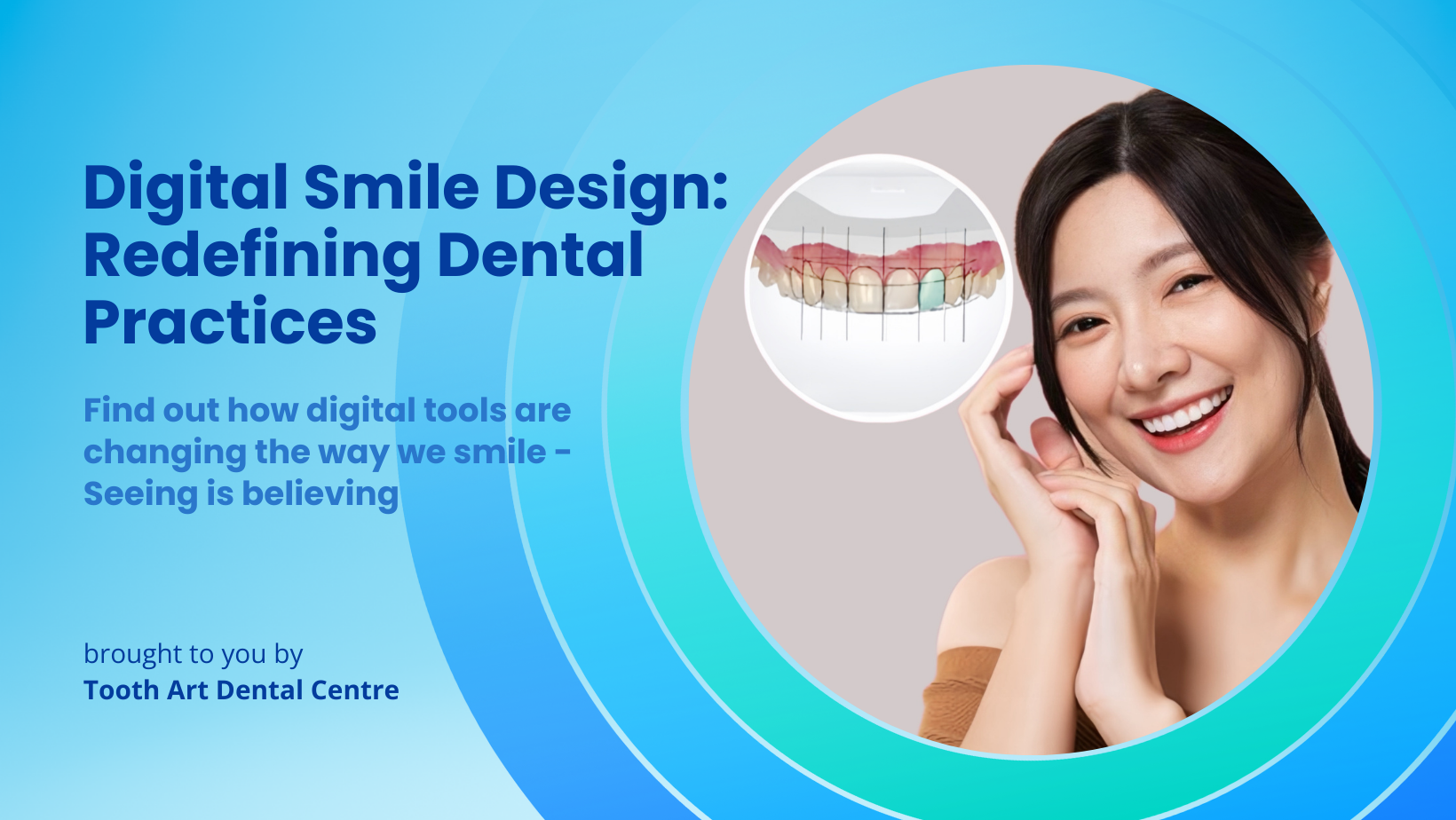Digital Smile Design – Redefining Dental Practices
In recent years, the field of dentistry has experienced a significant transformation with the advent of Digital Smile Design (DSD). This innovative approach has revolutionized the way dental professionals plan and execute smile makeovers, offering a more precise and patient-centric method compared to traditional techniques. Here’s a look at how Digital Smile Design has changed dental treatment for the better.
Traditional Smile Design: The Conventional Approach
Traditionally, smile design was a manual process relying heavily on the dentist’s experience and artistic skills. The process involved:
- Manual Impressions and Molds: Dentists would take physical impressions of the patient’s teeth.
- Analog Photography: Standard photographs and x-rays were used to assess the patient’s dental structure.
- Wax-Ups: Dentists created wax models of the proposed smile, which were used to visualize the end result.
- Subjective Planning: Treatment planning was largely subjective, based on the dentist’s interpretation of the patient’s needs and desires.
While effective, these methods had limitations in terms of accuracy, predictability, and patient involvement.
Digital Smile Design: A Modern Solution
Digital Smile Design (DSD) brings a technological edge to dental treatment, enhancing precision and patient satisfaction. Key components of DSD include:
- Digital Impressions: Instead of traditional molds, DSD uses intraoral scanners to create precise 3D images of the patient’s teeth. This process is quick, comfortable, and highly accurate.
- Advanced Photography and Video Analysis: High-resolution digital photographs and videos capture the patient’s smile from multiple angles, providing comprehensive data for analysis.
- 3D Modeling and Simulation: Using specialized software, dentists create a virtual model of the patient’s mouth. They can simulate various treatment outcomes, allowing patients to see a digital preview of their new smile before any work begins.
- Collaborative Planning: DSD facilitates a collaborative approach between the dentist and the patient. Patients can actively participate in the design process, ensuring their preferences and expectations are met.
- Predictable Outcomes: With precise digital planning, the risk of unexpected results is significantly reduced. The dentist can plan and execute treatments with greater confidence and accuracy.
Video: Watch how Digital Smile Design (DSD) transforms smiles using specialized dental software.
Benefits of Digital Smile Design (DSD)
The shift from traditional methods to Digital Smile Design offers numerous benefits:
- Enhanced Precision: Digital tools provide unparalleled accuracy, ensuring that the final outcome closely matches the planned design.
- Improved Communication: Patients can visualize their future smile and provide input, leading to better alignment between their expectations and the final results.
- Efficiency: Digital workflows streamline the treatment process, reducing the time required for planning and execution.
- Better Patient Experience: Comfort is significantly improved with digital impressions and non-invasive scanning techniques.
Conclusion
Digital Smile Design (DSD) represents a significant leap forward in dental care, combining advanced technology with a patient-centered approach. By moving away from traditional methods, dentists can offer more precise, predictable, and satisfying results, ultimately transforming the patient experience and setting new standards in dental aesthetics.
Contemplating a smile makeover? Schedule a discussion with our trained dental specialist today.
Note:
This article is intended for informational purposes only and does not substitute for professional medical advice. Individuals experiencing health concerns should consult with healthcare professionals for proper diagnosis and treatment plans.







